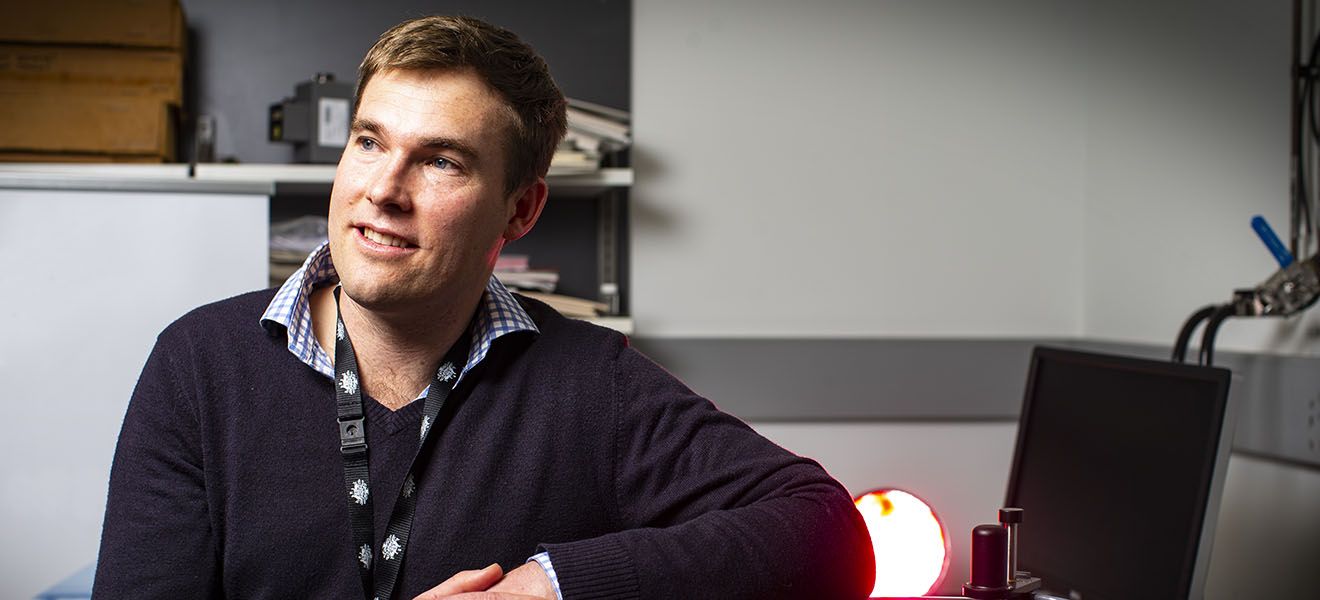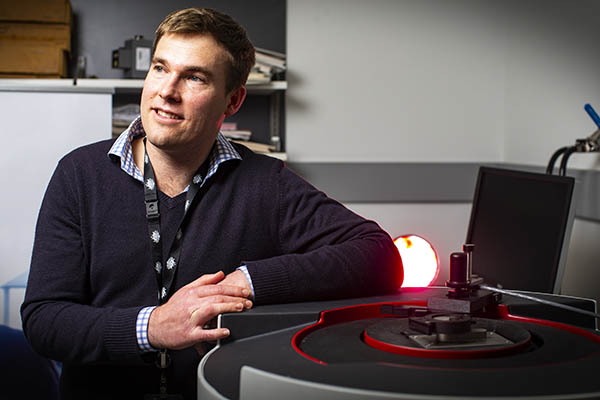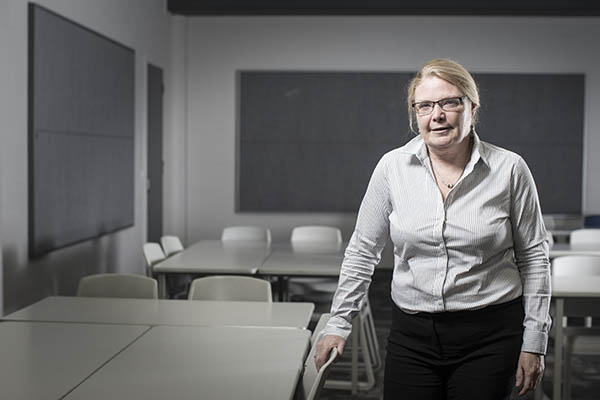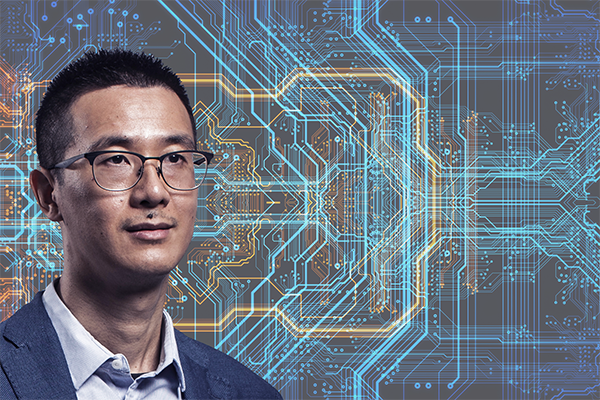Dr David Cortie
Institute for Superconducting & Electronic Materials
Exploring the frontier of electronic materials
Materials scientist Dr David Cortie is looking to the future in his search for new materials that can outperform silicon, the miracle material in smart phones and supercomputers.
Our desire for smaller, faster and cheaper computers has pushed silicon to its limit: silicon can no longer deliver the kind of progress it has for decades. Cloud computing is doing the heavy lifting now, with networks of remote servers providing increased computing power, but the inefficiency of current electronic materials, coupled with an unprecedented demand, is costly.
“We’re funnelling more and more electricity into computers. With the rise of cloud computing, there are giant computers out in the desert chewing up huge amounts of electricity, out of sight and out of mind,” Dr Cortie explains.
To reduce electrical consumption and boost the computing power needed to drive information technology, Dr Cortie is designing novel materials with superior properties for high-performance computing. The goal is to find materials that offer near-zero electrical resistance. While superconductors have long been known to achieve this, the zero resistance state can only be achieved at low temperatures, and so the search for viable alternatives continues.
Dr Cortie is fascinated by the interplay between chemistry and physics in materials, exploring how different elements within a material affect its electronic and magnetic properties. To do so, he has developed ultra-sensitive techniques for interrogating the structure and properties of advanced materials. “We’re exploring new landscapes,” he says.
In his PhD, Dr Cortie refined techniques for analysing the structure of magnetic thin film materials, work for which he was awarded the Australian Institute of Nuclear Science and Engineering Gold Medal. His research has been propelled by a generous fellowship at the Quantum Matter Institute, which is an international centre jointly affiliated with the University of British Columbia and the Max-Planck Institute. His materials science research benefits from long-standing partnerships with the Australian Nuclear Science and Technology Organisation.
The end goal may be to create next-generation electronics but Dr Cortie is inspired by the possibility of surprising discoveries. “Along the way, while we’re searching for this special material [to replace silicon], we’ll find other materials that are useful for other things. We have to be open-minded,” he says.
In this way, focused on the challenge at hand but open to ideas from different disciplines, Dr Cortie has contributed to a number of projects previously at the Australian National University and as an associate investigator with the Australian Research Council (ARC) Centre of Excellence for Future Low Energy Electronic Technologies. Recently, he was part of a UOW team that discovered a thermoelectric material with the capacity to harvest waste heat released by inefficient electronic materials and convert it back to electricity.
He has also co-authored with colleagues from ISEM a Physical Review Letters paper that describes creating an effect in liquid gallium where the metal pulses rhythmically, like a beating heart. The finding has potential applications for fluid-based timers and actuators in artificial muscles, soft robotics and lab-on-a-chip microfluidic circuitry.
Now, with a 2018 ARC Discovery Early Career Researcher Award, Dr Cortie will explore the magnetic properties of topological insulators, materials that can potentially be engineered with atomic precision to allow electrical currents to flow unimpeded, meaning no power is lost in transmission.
“It’s continuing the dream of superconductivity and ultra-low energy electronics but looking at it from a different angle.”





